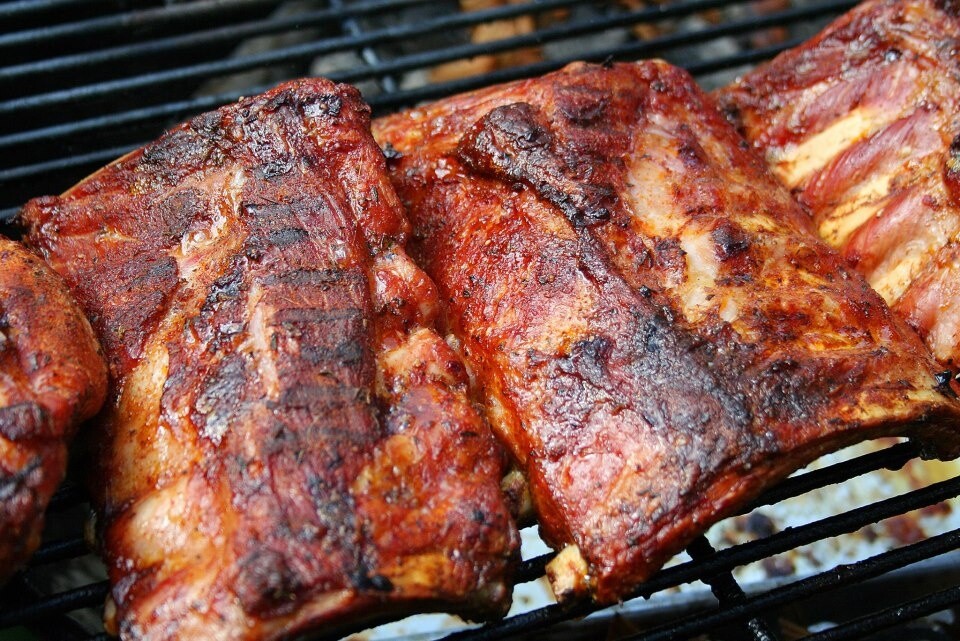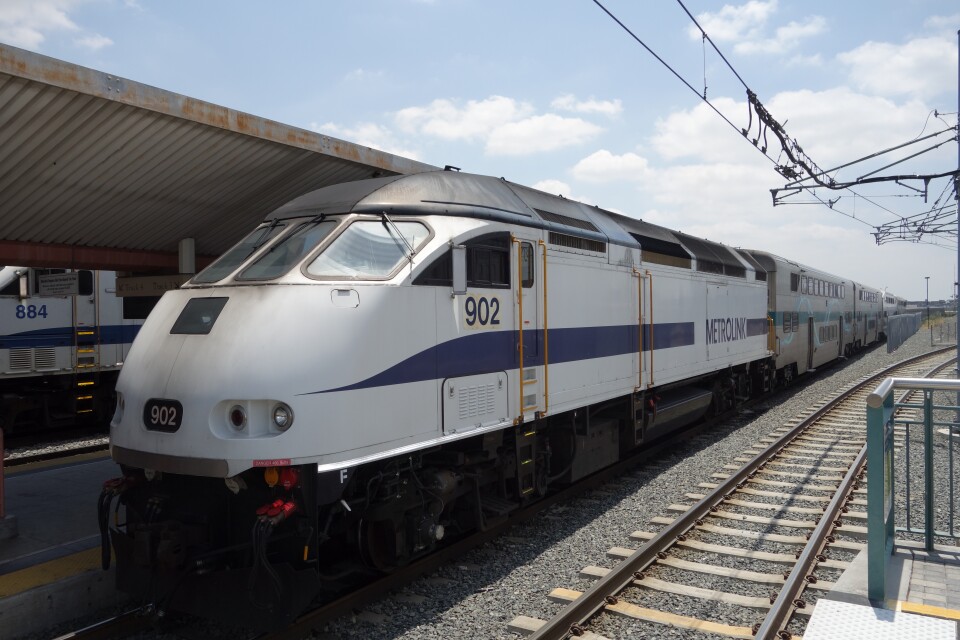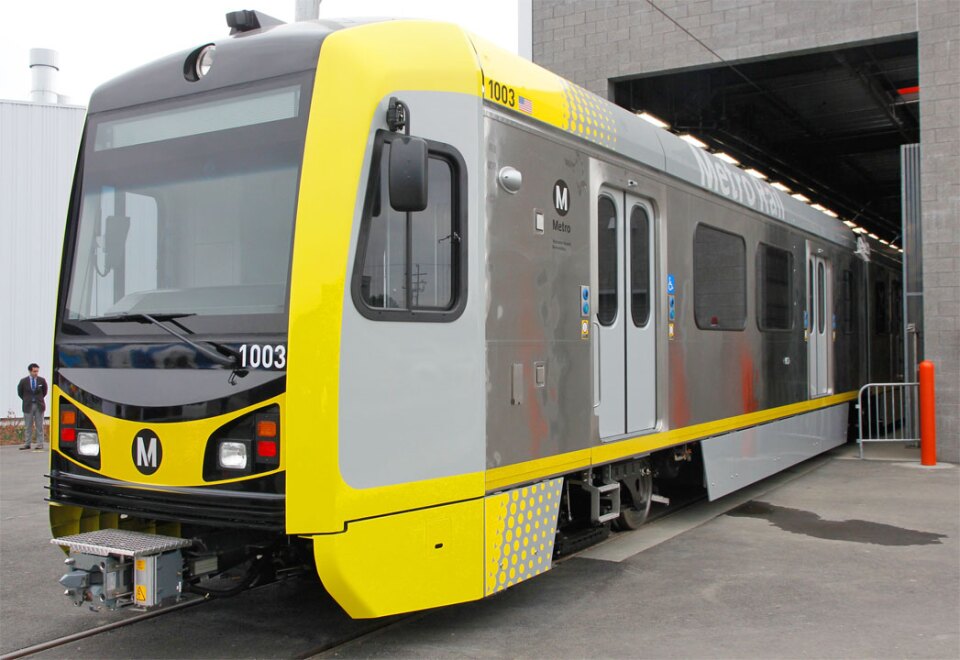It could get easier to pass CA bar exam, Ventura County secures funding for veterans' clinic, the Gold Line extension means some areas have multiple train options.
Lowering the bar: Possible changes to lawyer exam could help students of color, immigrants
What does Homer Simpson have in common with California's law students? They both have trouble passing the bar.
But really though, the California State Bar exam is one of the hardest of its type in the country. Last year, just 43-percent of law school grads passed it. That has a lot of people concerned — especially the State Bar of California.
On Monday, they proposed lowering the minimum passing score, saying a little bit could go a long way.
And at least one group stands to benefit: underprivileged communities, including those of color.
For more on this, Take Two spoke to Kimberly West-Faulcon, professor of constitutional law at Loyola Law School in Los Angeles.
Press the blue play button above to hear the full interview.
Correction: During the interview, the guest states that those who pass the California Bar Exam can practice law in other states. This is incorrect. California does not have reciprocity.
When LA sold tanning, barbecue and surfing to the rest of America
Ahh, California.
The golden state. The land of perpetual summer.
And due to the never-ending heat, we Angelenos KNOW how to play in it. We practically invented it. From barbequing to surfing and everything in between.
Author D.J. Waldie calls this embrace of the summer season: "The source of our sunny liberation."
Waldie spoke with Take Two's A Martinez to break down how Angelenos invented summer culture.
Answers have been edited for brevity and clarity.
It all started as marketing
"We had to sell summer to America, in order to make summer in L.A. liveable. There was a massive advertising campaign, beginning in 1921, through the all year club, that reached out to...residents in Oklahoma and Kansas and Arizona, and New Mexico and Texas and told them, 'Come to L.A. in the summer time. It's only 90 degrees.' And this was a revelation to those lived in the hot zones of the South West."
LA sold tanning to America
"Before...about 1920, most Americans...resisted the idea of getting a tan. That was thought to be an unappealing look. But beginning in the 1920s, particularly through the movies, the idea of exposing one's skin to the sunlight and getting a tan was becoming an idea of health and beauty.
So, L.A. sold tanning to America and that made it possible to invite paying customers to expose their skin on the beaches of Los Angeles."

Barbequing was appropriated
"That was going on in Southern California from Spanish colonial period to Mexican colonial period, appropriated by the middle class, working class residents in the '30s and '40s and definitely into the '50s.
...there were a number of magazines, primarily Sunset magazine which was a lifestyle magazine of the '30s and '40s that continued on afterward. It sold the idea of outdoor living to Californians. Outdoor living was a little unusual...but the outdoor life around the barbeque, became a quintessential element of what it meant to be Californian."

Surf Culture
"Surf culture explodes in the 1950's and you have inexpensive surf boards, better made using war time and space age materials. And the surf culture becomes a really integral part of what it means to be at the beach in Southern California. And that becomes an incredibly desirable marketing tool.
True surfers resisted commercialization of their culture but the marketing machine of Southern California selling itself, turned surf culture into clothing, records, movies...it goes on and on. For people who may never have gone to the beach at all...they never went into the water...but they lived the surf culture life, through these commodities and products."
To listen to the full interview, click the blue play button above.
Jumbo jet that could launch rockets lands in Long Beach
There's a new plane at the Long Beach airport - it is called "Cosmic Girl," and she's getting lots of attention.
The plane is a Boeing 747 that used to fly passengers, but now has a new job working for space company Virgin Orbit. The plane will eventually be used to launch rockets into space.
Take Two spoke with journalist Tim Fernolz, who writes about space for Quartz and has a book coming out on the commercial space industry.
"What they've done to it at Virgin Orbit is retrofit it, tear out all of the seats so that they can use it to launch rockets into space."
To listen to the full segment, click the blue play button above.
The unintentional competition between Metrolink and Metro Rail
They are two sides of the same coin of Los Angeles public transportation.
The locomotives of Metrolink, which connect Union Station in Los Angeles to Orange and Riverside County:

And the light trains of Metro Rail, which run through the urban areas in and around downtown L.A.:

Metro Rail will soon begin its latest project: An expansion for the Gold Line from its current endpoint at Azusa Pacific University to Montclair.
The problem is that those planned Metro stops are close to existing Metrolink stops. This overlapping of the two systems has happened before. And it's caused Metrolink ridership to drop as people switched over use Metro instead.
"Metro Rail is going to be cheaper; it's going to have more frequent service. So that's the main driver for someone wanting to Metro Rail over Metrolink," expert Ethan Elkind told Take Two's A Martinez. Elkind is the author of Railtown: The Fight for the Los Angeles Metro Rail and the future of City.
While they are similar, Elkind says that LA's two rail services are meant to serve two different types of commutes.
"Metrolink is really designed as a commuter system. It runs during those peak commute hours; It doesn’t have frequent service; it’s a little more expensive. Metro Rail … is really meant for high-density areas; for frequent travel among some areas with high-rise type buildings or at least moderate density where you have a lot of jobs and housing and people needing to get around."
To hear the full conversation, click the blue player above.
Sports Round-up: High school football, CTE and the popularity of baseball.
Last week we talked about the surprising results of a study of over 200 former NFL players brains.
All but one showed signs of CTE, the disease associated with blows to the head.
Football's image has taken a lot of hits the last few years but kids still like playing the sport, except maybe not as much as before here in California.
According to the California Interscholastic Federation, participation in high school football has dropped by a little over three thousand kids for the 2nd straight year.
We talked about this and the rest of the week's sports news with Take Two contributors Andy and Brian Kamenetzky.
To hear the full conversation, click the blue player above.
Grand Central Market serves up a trend: Food halls
Grand Central Market turns 100 this year, and for decades it was a place where generations of families could grocery shop.
But more recently, it was reborn as a massive foodie destination.
Tourists and L.A. natives might slurp vegan ramen at Ramen Hood, enjoy some churros con leche ice cream from McConnell's or wait 30 minutes (or more!) for an egg sandwich at Eggslut.
And the success of GCM spawned its own trend in Southern California: the rise and popularity of food halls.
"There is so much speculation in the real estate market now," says Farley Elliott from Eater LA. "Any space that is of a certain square footage where people think they can break it down and piecemeal it up is being considered for a food hall."
They're a little different from food courts since the latter tends to have chains and franchises as their main tenants.
But a food hall is where local restaurants and chefs can try out different concepts under one roof.
GCM's recent iteration started when the food truck Eggslut came in to set up a permanent stall and just sell egg sandwiches.
"It's a hard endeavor: the truck backs down, you've got to move it somewhere for a particular amount of time, you have to drive to your locations," says Elliott. "It's a big, big suck of your energy, money and time."
A stall at GCM, however, meant that the rent would be cheaper than the owners opening up their own restaurant. Plus they could rely on the high volume of foot traffic in downtown.
They also tapped into the way Americans like to eat.
"More and more people are embracing this style of dining: fast-casual with lower price points," says Elliott.
Eggslut's popularity drew other vendors like it over the years, and the cumulative success of the entire space has spawned imitators across SoCal.
"It's a trend that is catching on more and more simply because you have rising rents in Los Angeles," he says.
Elliott frequently writes about what's on the horizon, and notes that two food halls are scheduled to open up in downtown LA within a year.
Edin Park in Beverly Grove is scheduled to debut in a few months with two stories and 31 different stalls.
The Beverly Center will also be opening up a food hall on top of the building once renovations are complete.
And Orange County has its own mix of food halls throughout the area.




